" What do you get when you get a hi-end Ducati superbike naked. Well, here's what you get. And we think you'll agree, this Italian piece of loveliness looks just as good with clothes off. This year's 1199 Panigale is about as "

The growth of Ducati’s superbikes
Few names in the world of superbikes evoke the same levels of emotion and desire as Ducati...
The company’s first endeavour was in producing radio equipment before switching to kitting out bicycles with tiny engines to create what was called the Ducati Cucciolo.
Strong sales encouraged the company to go on to produce more motorcycles and following much success on the track, Ducati’s road bikes quickly became more sought after. While the company produced a variety of different types of motorcycle, it is best-known for its superbikes, many of which look as achingly beautiful today as when they were first unveiled. Here’s a brief history of some of the most iconic models.
One of the first models to truly wear the superbike image was the 750 Paso, which made its debut in 1986 under the slogan “Il nostro passato ha un grande futuro”, meaning “Our past has a great future”. It was clad almost entirely in aerodynamic (for the day) bodywork including a painted screen. One of the first Ducatis to have an engine with desmodromic valves, the Paso’s 748cc engine was replaced with a 904cc unit giving the bike 88hp and a 136mph top speed.
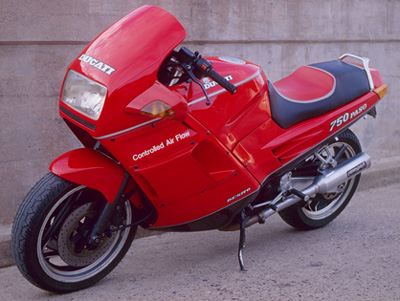
In 1993, famed designer, Pierre Terblanche, teamed up with Massimo Bordi and Claudio Domenicali to design what is still one of the rarest modern Ducatis. This single-cylinder was draped in carbon fibre bodywork that would go on to influence a future generation of superbikes. Its 550cc engine produced 76hp at its most potent form and revved to 10,500rpm. The single cylinder was horizontally placed and used a dummy con rod that simulated the action of a second piston, giving it the balance of a 90-degree V-twin. The exotic racer never made it onto the roads, and in all, just 67 were built.
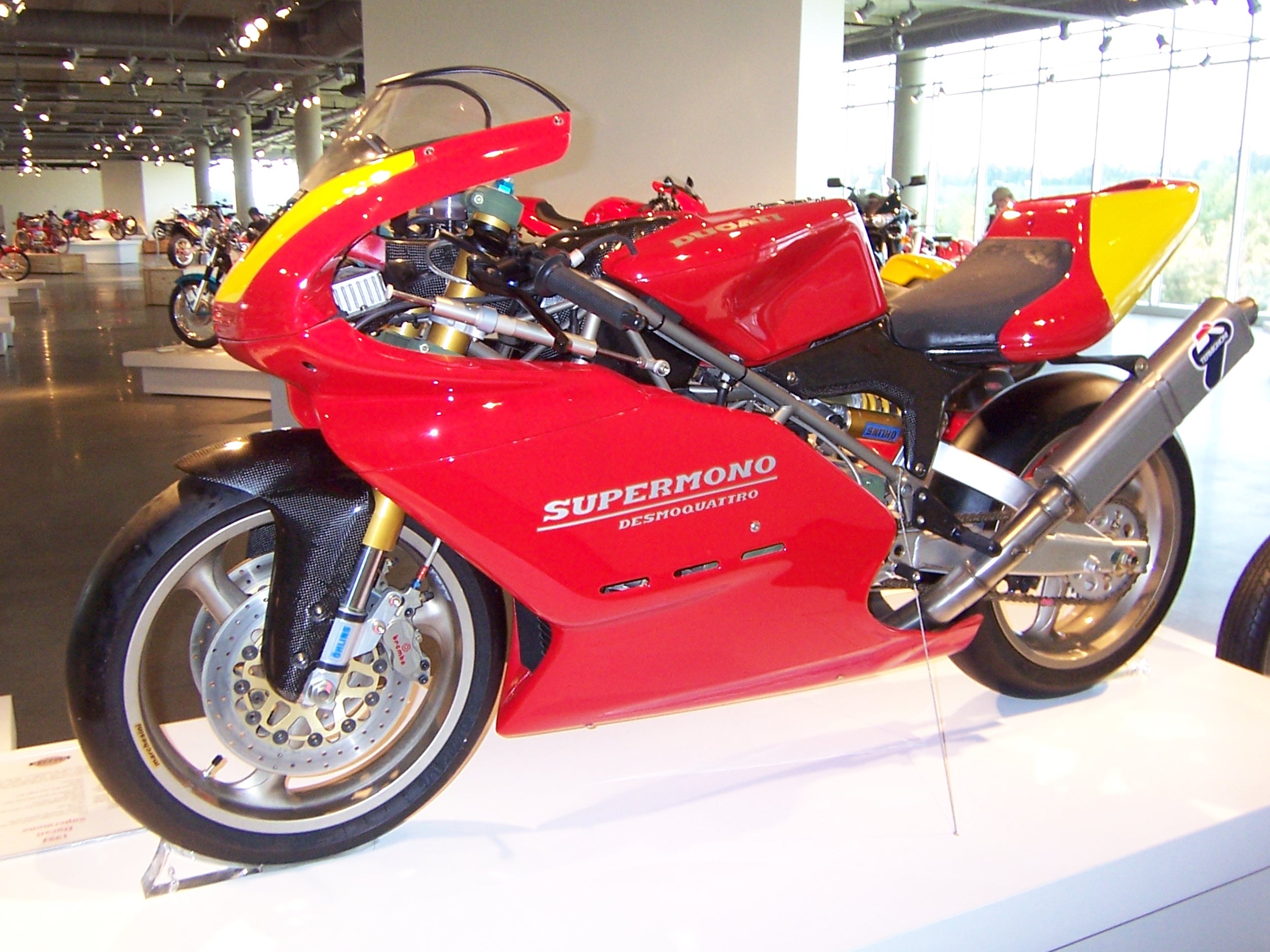
Just one year after the Supermono began production, Ducati launched a model that quickly became the poster bike for an entire generation. The 916 had lines the like of which had never before been seen. Not only was it functional, but it was also truly beautiful. Clearly influenced by the Supermono, the 916 featured a trellis frame design, single-sided rear swingarm and neat under seat exhausts that emitted a glorious sound.

When it came time to update the 916 Ducati decided not to tamper with the exquisite styling, instead focussing more on the mechanicals. The 996 gained larger pistons, valves and stronger crankcases that were developed through the 916 SPS. You could have a 996 as a base model, Biposto (two seater) or the 996S, the latter featuring Öhlins suspension. In Europe, there was the 996SPS that came from the factory with even more power and less weight, and in 2001 the 996R was introduced with 500 being built to satisfy homologation requirements for the World Superbike Championship.
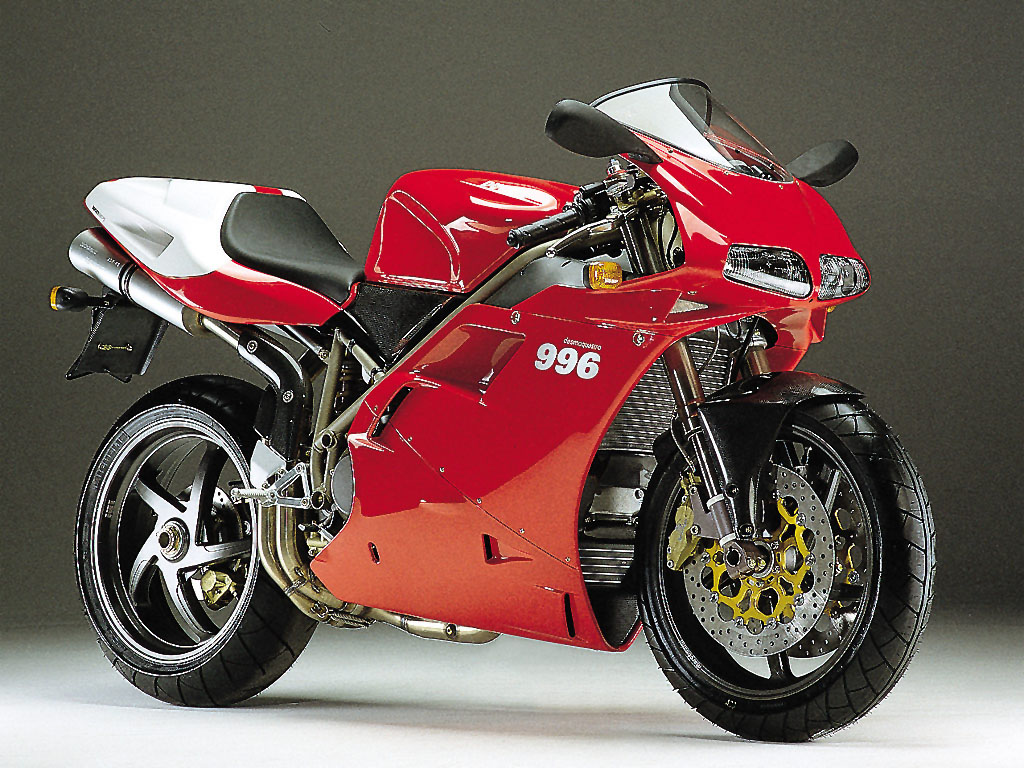
Three years later the 996 was superseded by the 998. Again, little had changed cosmetically, and even though the design had changed little in almost a decade, the Ducati still looked fantastic. The 998’s engine was bored out to 998cc with power output upped to 123hp. Like with the 996, both 998S and 998R models well produced as well as a 998 Matrix, which was featured in the movie The Matrix Reloaded.
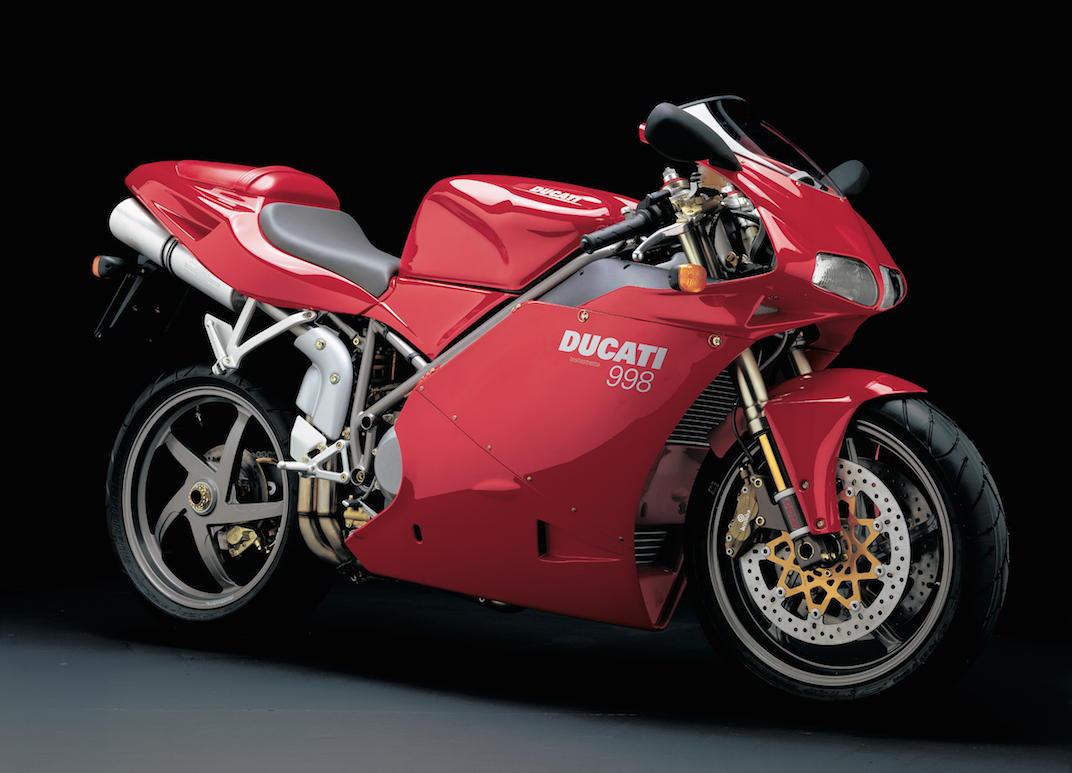
For the company’s new superbike came an all-new but somewhat controversial look. The 999 took on a more angular appearance. Despite dividing option on its looks, there was no question of its performance, with standard models producing 138hp, while the range-topping 999R’s output was rated at 145hp and was capable of hitting 62mph in under three seconds. Its finely tuned suspension setup made it one of the best handling bikes of the era.
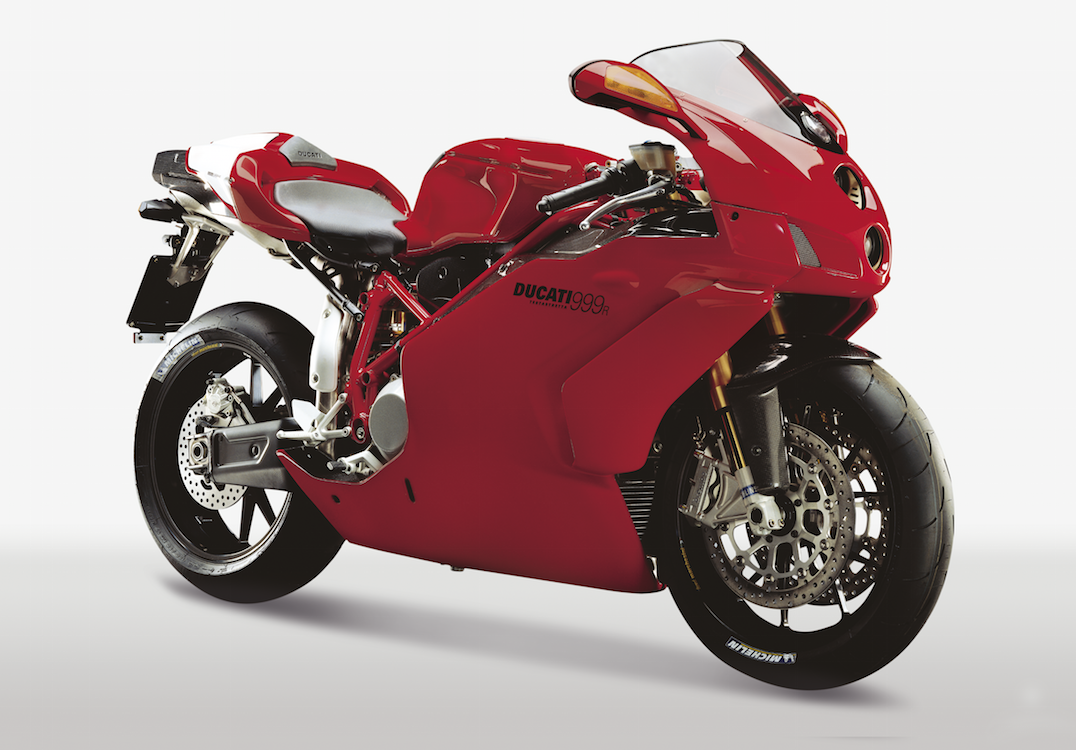
In 2004, just one year after the introduction of the 999, Ducati announced that it would build a road-going version of its Desmosedici MotoGP bike. Three years later, production began and true to its word, the Desmosedici RR was effectively a MotoGP that you could ride on the road. It used a 989cc Desmodromic V4 and produced 197hp while weighing just 171kg (dry). The bike cost a staggering £40,000 at the time, and Ducati 999R owners were given the first refusal. In the end, 1,500 were made.
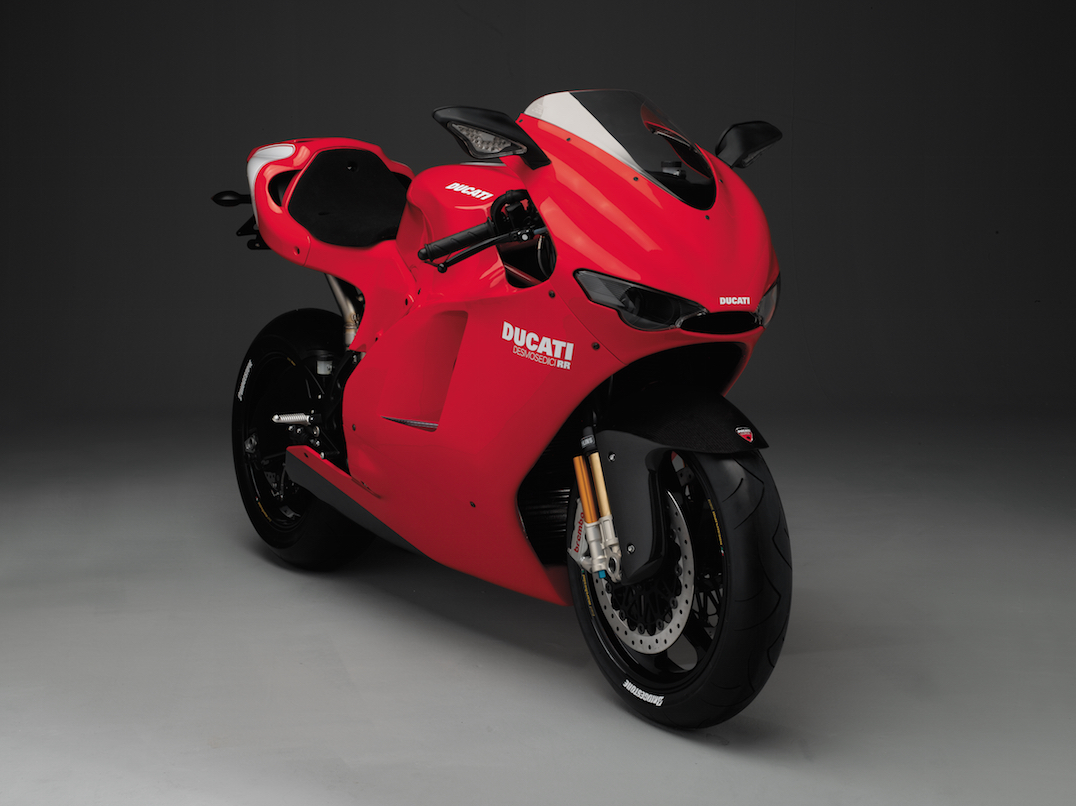
A change in the World Superbike Championship regulations saw Ducati move to a larger capacity 1099cc engine for the 999’s successor, which was christened the Ducati 1098. The bike saw a return to a more aesthetically pleasing style that had lines that portrayed a modern take on the classic 916 design. Its 90-degree V-twin made a healthy 160hp in its standard guise, but for the 1098R model, Ducati upped the engine size to 1198cc giving it a power output of 180hp. This power, combined with the torque of the V-twin made for impressive performance.
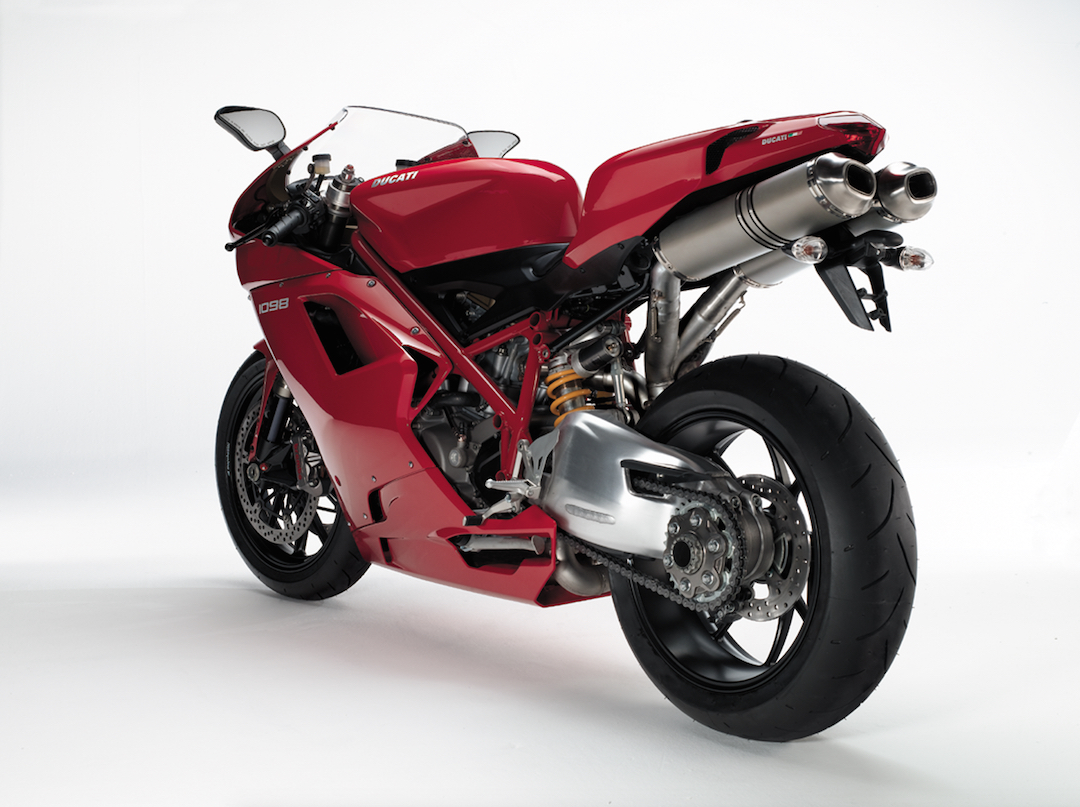
The evolution of the 1098R’s engine paved the way for Ducati’s new superbike: the 1198. This model was built for just three years (2009-2011) and although there were only minor styling differences, many performance enhancements were made. Lighter fairings (on the 1198S), headlights and redesigned wheels help to differentiate it from its predecessor.
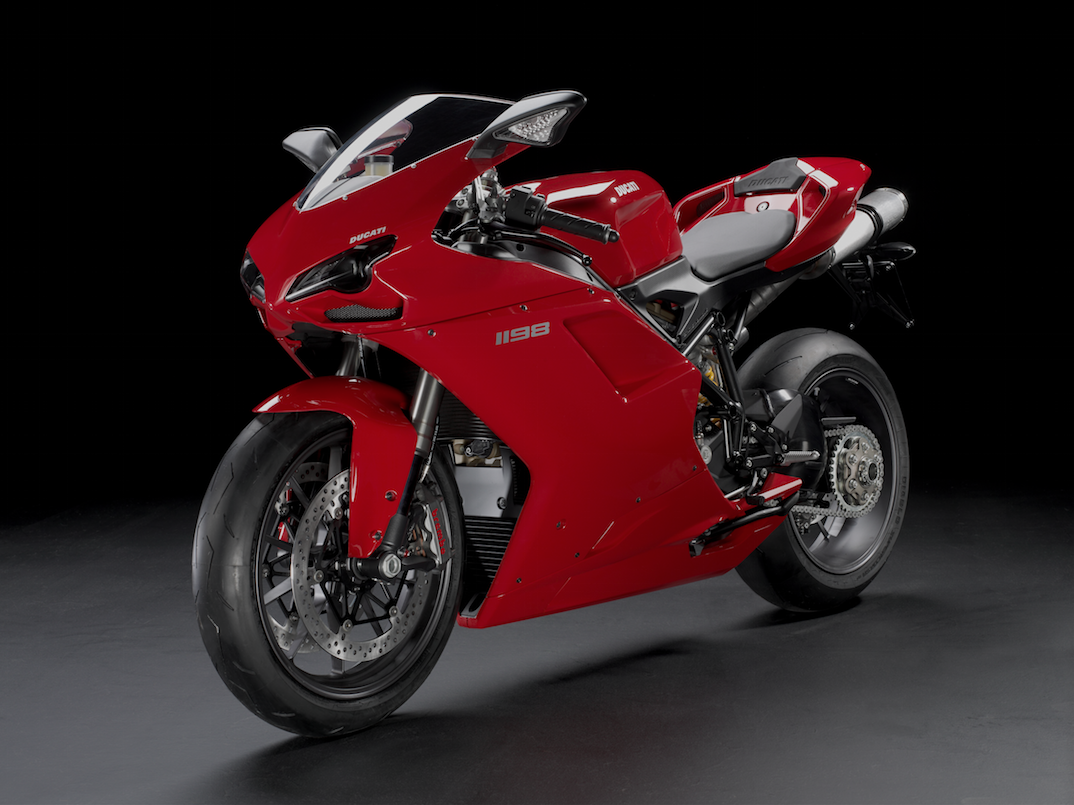
2011 saw Ducati make yet another step change in the evolution of its superbikes with the introduction of the 1199 Panigale. Not only did the design showcase a pared back motorcycle to keep weight as low as possible, but it was also the most powerful production twin-cylinder motorcycle in the world when launched. The liquid-cooled 1,198cc motor had a rated output of 195hp and featured an intricate exhaust system that snaked around behind the engine block before exiting through a silencer that was slung under the belly pan. As a result, the rear shock was mounted horizontally on the left side. All of this was down to the focus of mass centralisation to maximise the bike’s handling. Its most extreme version was the 1199 Superleggera, and just 500 were produced. Unique features included a magnesium monocoque frame and extensive use of carbon fibre and titanium to reduce weight down to just 177kg when wet.
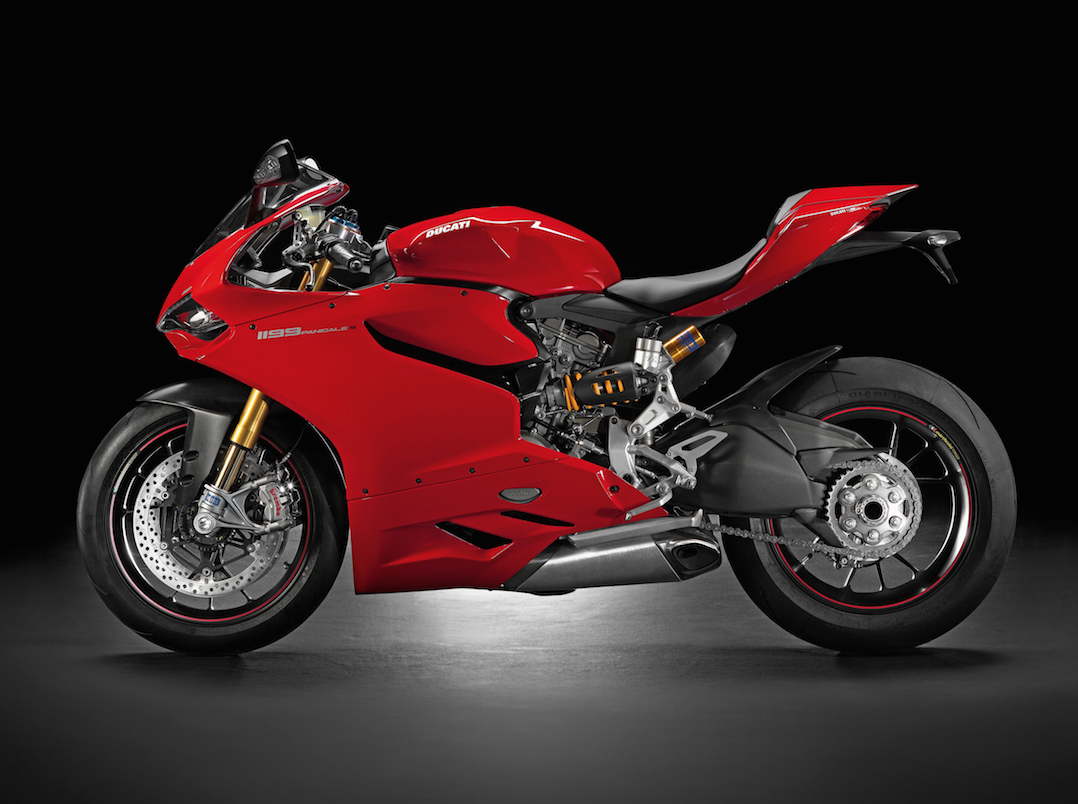
These incredible developments bring us to the latest Ducati superbike – the 1299 Panigale. Although very much an evolution of the 1199, this bike represents the pinnacle of twin-cylinder Ducati sportsbikes. The engine grew again in size to 1,285cc and delivered a phenomenal 205hp. Interestingly, the 1299R Panigale retained the older 1,198cc engine to comply with the engine displacement regulations for the World Superbike Championship. But Ducati did add a tungsten-balanced crankshaft, titanium valves and con-rods along with two-ring pistons into the mix. For its most extreme model, the 1299 Panigale Superleggera, Ducati introduced a carbon fibre chassis, magnesium engine casings and a bespoke exhaust system that brought the weight down further to just 167kg, while power increased to 215hp, making this one of the most potent superbikes ever made.
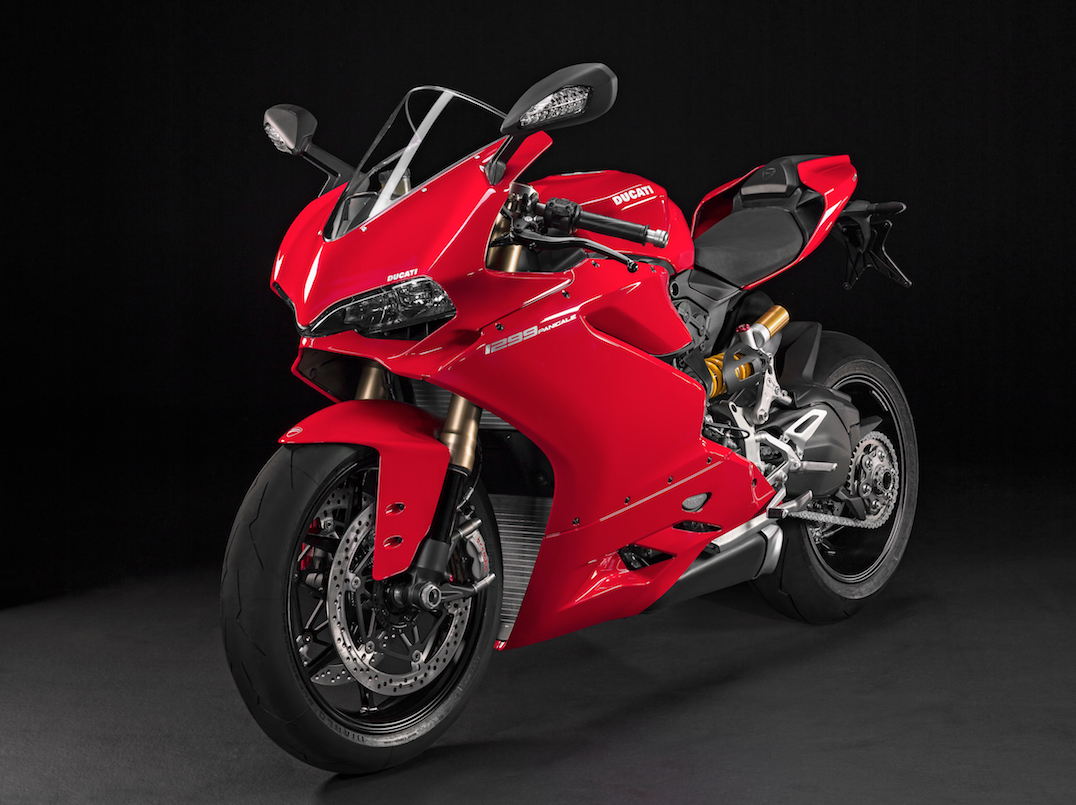
It seems fitting that Ducati pushed the boundaries so much with the 1299 Panigale Superleggera, as although there was one more Final Edition model, it is the Superleggera that will be remembered as the pinnacle of V-twin Ducatis. If rumours are to be believed, the next Ducati superbike, due to be launched later this year, will change to using a V4 engine.
While this is bound to offer impressive performance, many will be sad to see the end of the line for an incredible superbike lineage.
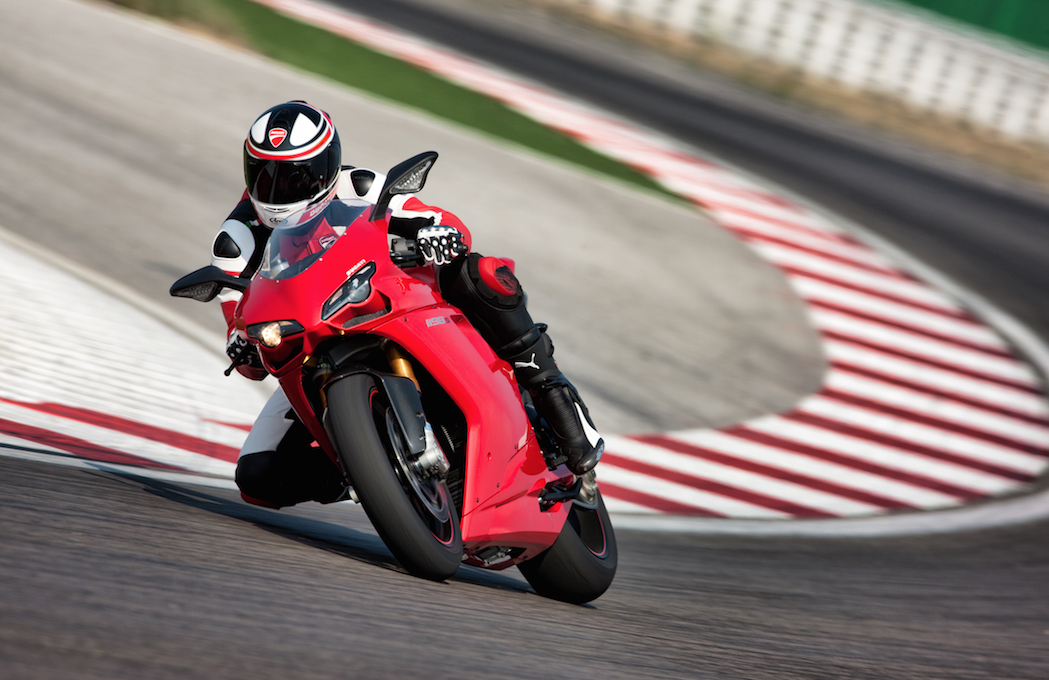
CLICK TO ENLARGE










“One of the first Ducatis to have an engine with desmodromic valves, the Paso’s 748cc engine” – really? In 1986? what about the 900cc SS, Darmah and Mike Hailwood replica from the mid Seventies? Get it right please.
You’re right Eric. The amount of motoring misinformation regarding great marques on the Internet has to be witnessed to be believed. But then I owned a 900SS (desmo). Along with a Guzzi Le Mans1, best looking production bike of all time.